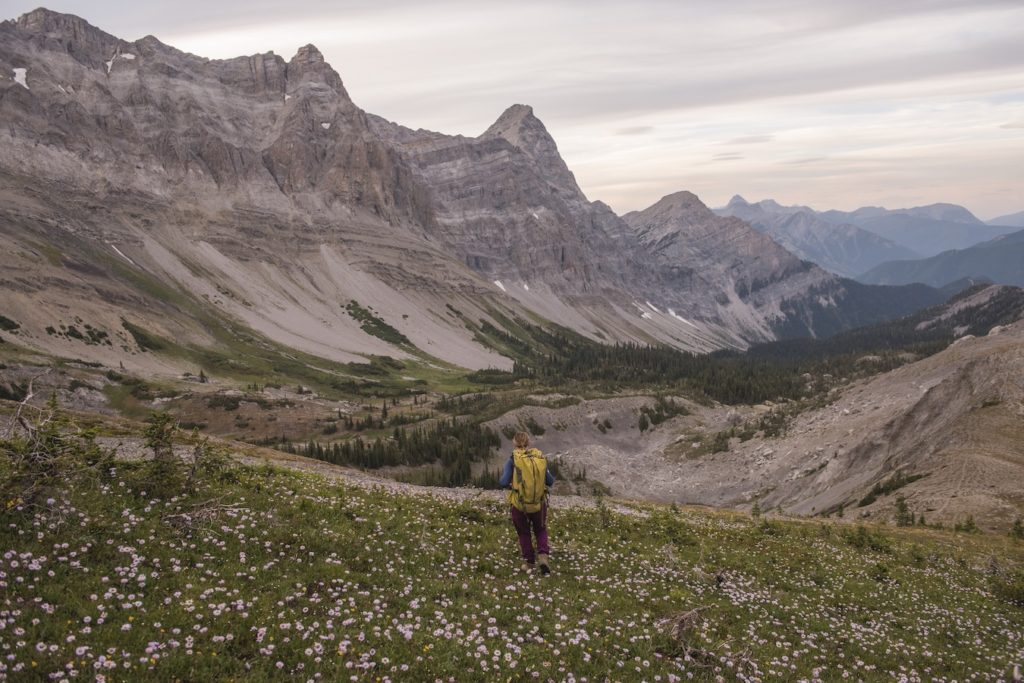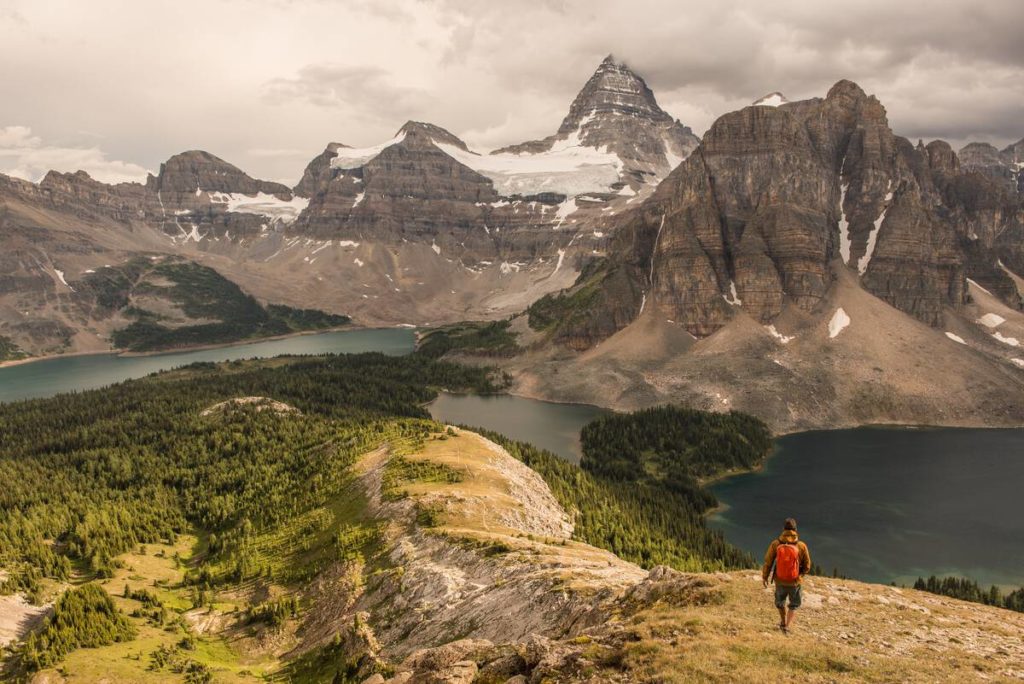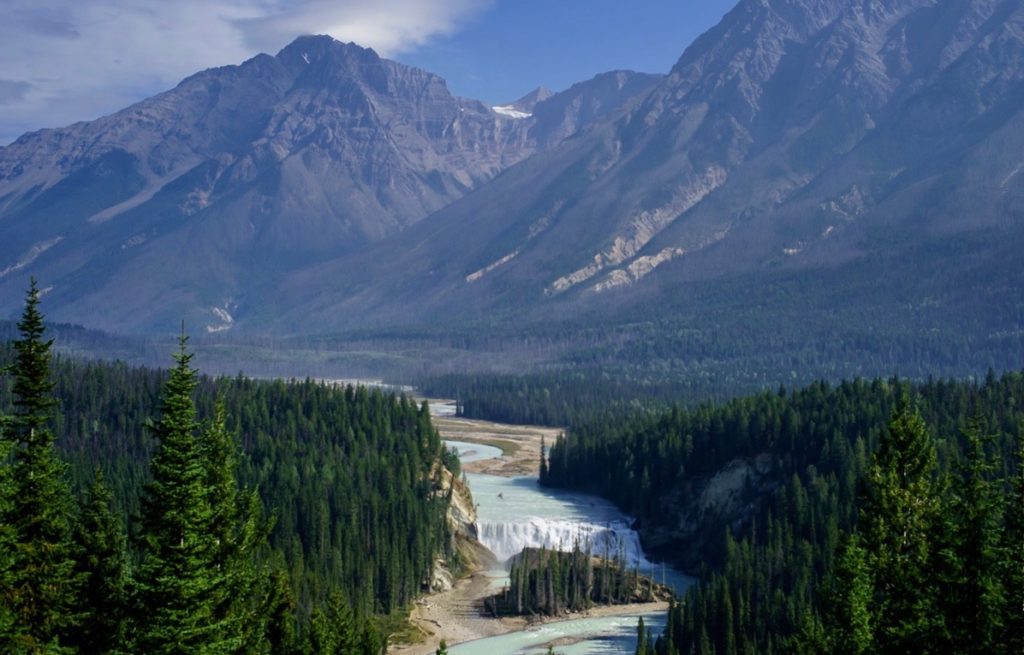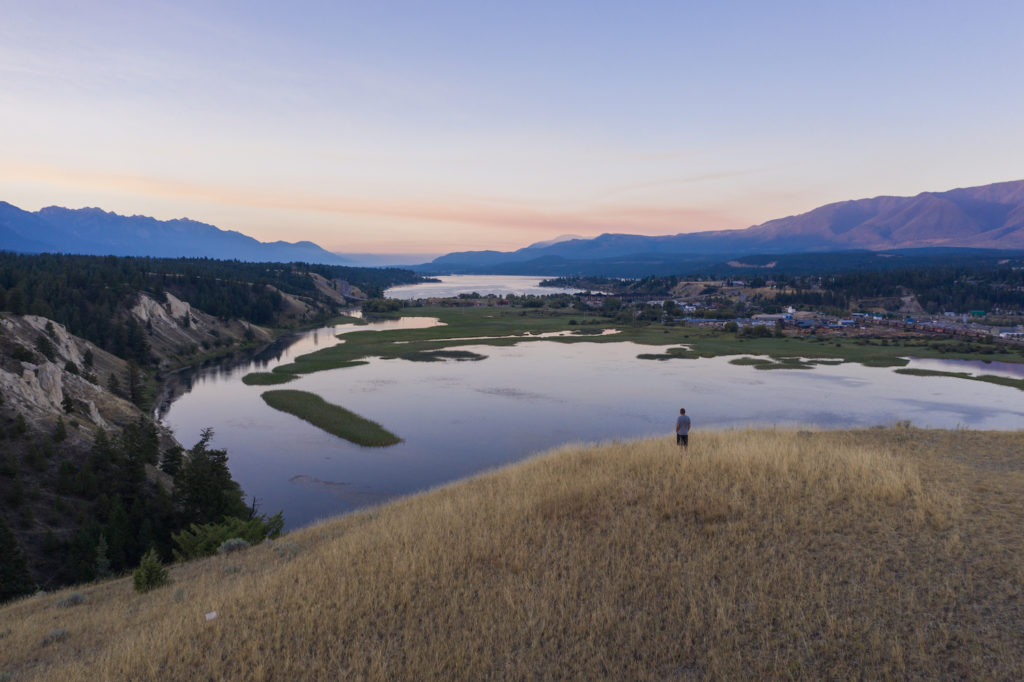Introducing the Rockwall Trail in Kootenay National Park – an iconic multi-day hike in the Canadian Rockies UNESCO World Heritage Sites. Get ready for an invigorating 4-to-5-day backpacking excursion, a commanding 55-km journey, charting a course for adventure in the Canadian Rockies.
Unquestionably, the Rockwall Trail shines amongst multi-day hikes within the Canadian Rockies. This trail demands not just strength, but perseverance, punctuating daily ascents and descents with its glorious rewards. The sight of Floe Lake, the imposing beauty of towering limestone cliffs, awe-striking hanging glaciers, lush green meadows, and majestic cascading waterfalls reaffirm its position at the pinnacle of any backcountry enthusiast’s bucket-list.
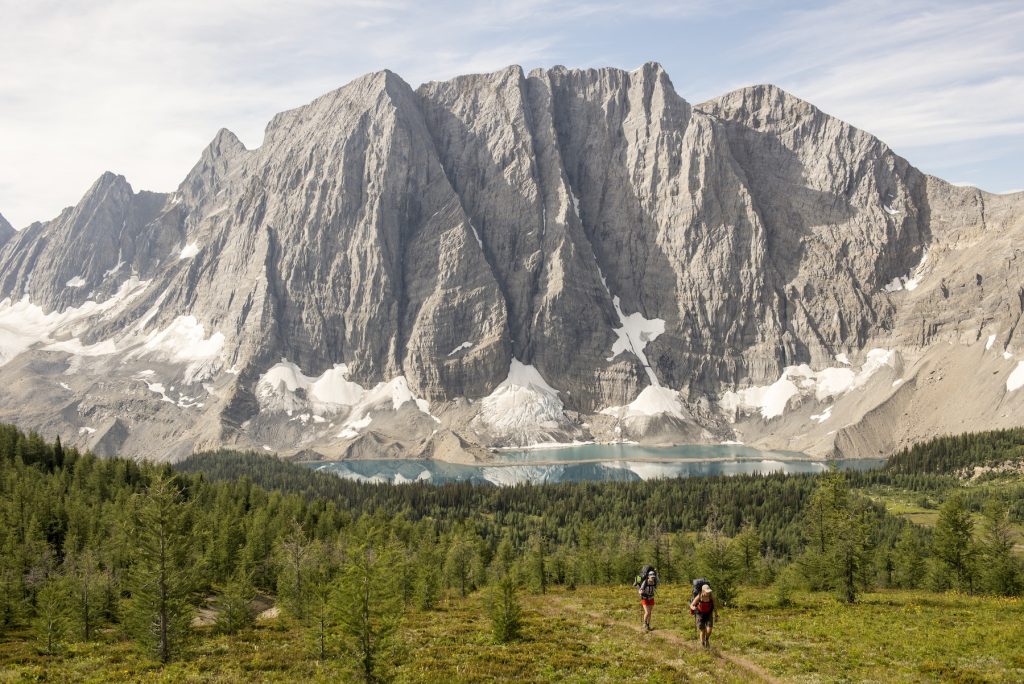
GEARING UP FOR THE BACKCOUNTRY EXPERIENCE
As you gear up for this hike, start by building up your endurance starting with shorter to longer hikes. Begin with powering up your legs and core muscles – by strengthening these muscles, you’re not only supporting the weight of your backcountry pack but also increasing your ability to hike more robustly and for extended periods. Make sure to build endurance in these muscles, along with your shoulders and lower back, readying yourself for an entire day of hiking.
ACCESSING THE TRAILHEADS
Discover the beauty of nature at the Paint Pots and Floe Lake trailheads. If you’ve got the time and endurance, the Rockwall Trail adventure is a portion of the longer Great Divide Trail. Starting from either direction is possible – the two main trailheads are separated by just 13-km. To maximize your experience, coordinate a car swap with fellow backpackers.
The iconic Rockwell Trail is accessed through four key points along Highway 93 South. Many seasoned explorers opt for the full trail via the Floe Lake trail or the Helmet Creek Trail.
~ Floe Lake Trail, access via Floe Lake trailhead
~ Numa Creek Trail, access via Numa Falls trailhead
~ Tumbling Creek Trail, access via Paint Pots trailhead
~ Helmet Creek Trail, access via Paint Pots trailhead
THE MULTI-DAY HIKE
Accessing the remarkable Rockwall Trail journey is from either of its end points, depending on the available campsites at time of booking. Majority of explorers set out from the Floe Lake Trailhead and conclude at the Paint Pots Trailhead. The Floe Lake starting point is conveniently situated on the western side of Highway 95, a mere 22.5-km south of the boundary of Banff and Kootenay National Parks.
Securing your National Parks Pass and Backcountry Permits is your first step, since you will camp along the trail. On the majestic Rockwall Trail, you’ll find five strategically placed campgrounds, each about 8 to 12-km apart.
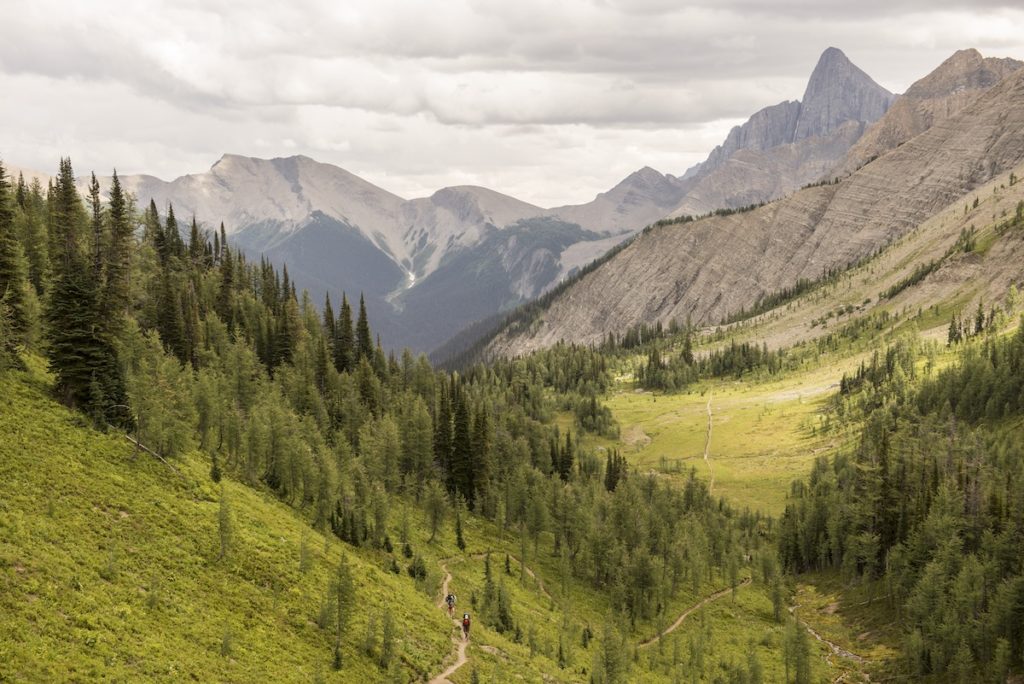
BOOKING YOUR CAMP SPOT
The campgrounds are outfitted with tent pads, immediate access to pure creek water, and exclusive picnic areas designed for cooking – all provisioned with bear lockers for your convenience and safety. To assist you with planning your route, here are the distances & elevations of the campgrounds on the trail:
~ 10.5-km: Floe Lake Trailhead (1,337-m) to Floe Lake Campground (2,030-m)
~ 9.2-km: Floe Lake Campground to Numa Pass (2,336-m) to Numa Creek Campground (1,549-m)
~ 7.9-km: Numa Creek Campground to Tumbling Pass (2,233-m) to Tumbling Creek Campground (1,893-m)
~ 12.3-km: Tumbling Creek Campground to Rockwall Pass (2,230-m) to Helmet Falls Campground (1,770)
~ 8.4-km: Hemet Falls Campground to Helmet/Ochre Junction Campground (1,515-m)
~ 5.8-km: Paint Pots Trailhead (1,434-m)
Secure your camping adventure within an assigned tent pad/site, to assist in limiting environmental disturbance. Each pad is designed to accommodate up to 4 people, per tent. You’re welcome to extend your stay for three continuous nights. For small groups, Kootenay National Park permits a group size up to 10 members and 5 tents. Please remember, a Park Canada Backcountry Permit is required for overnight trips in the backcountry at any time of year.
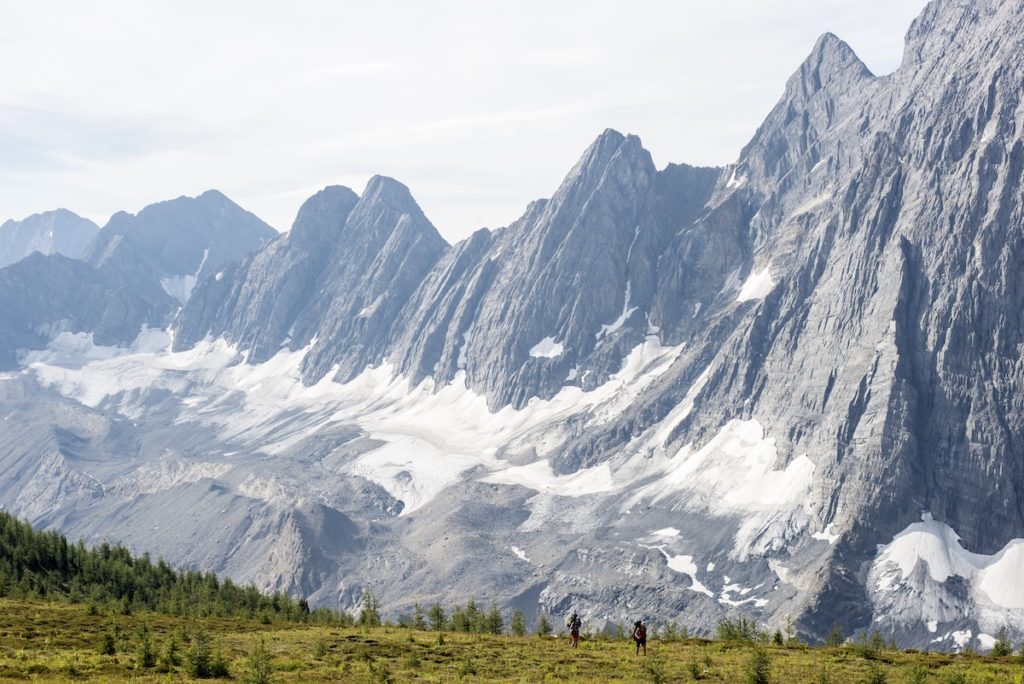
PURPOSEFUL TIPS
You are hiking through prime bear territory – so be alert. Amplify your presence with a lively chatter while hiking. For an extra boost of confidence, feel free to band up with other adventurers.
Ensure the safety of your campsite by confidently securing all food, garbage, toiletries, and cooking equipment in the wildlife-proof food storage lockers or bear poles Parks Canada provides at their designated campgrounds. Remember, a spotless campsite at the end of your stay is a sign of your respect for nature.
Let’s take charge and protect the environment. Leaving litter behind is not just unlawful, it also harms the precious wildlife. Make sure you pack up and take any rubbish with you. Neither the food lockers nor the outhouses are the right place for disposal. Please pack out all of these items and place them in the bear-proof containers at the end of your hike (near the trailheads).
Preserving the natural and cultural resources is a responsibility we all share. Leave all rocks, fossils, horns, antlers, wildflowers, berries, mushrooms, nests and other artifacts found in the national parks, for others to find. It is unlawful to remove, deface, damage or destroy any natural or cultural resources within the national park. Let’s create a sustainable future together!
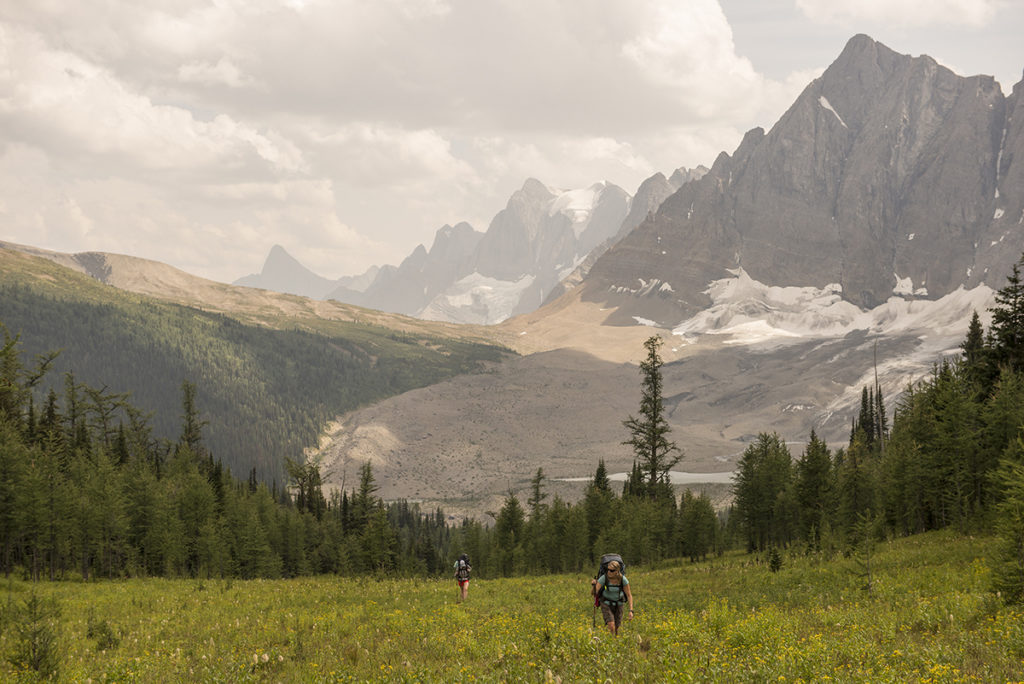
BEST TIME TO HIKE THE TRAIL
It is best to experience the Rockwall Trail from early-mid July through mid-September. A venture later in the season, bypasses the crowds and increases your flexibility in booking. However, be prepared for shorter days, cooler nights, and potential early season storms (rain, wind & snow) adding a dose of excitement to your journey.
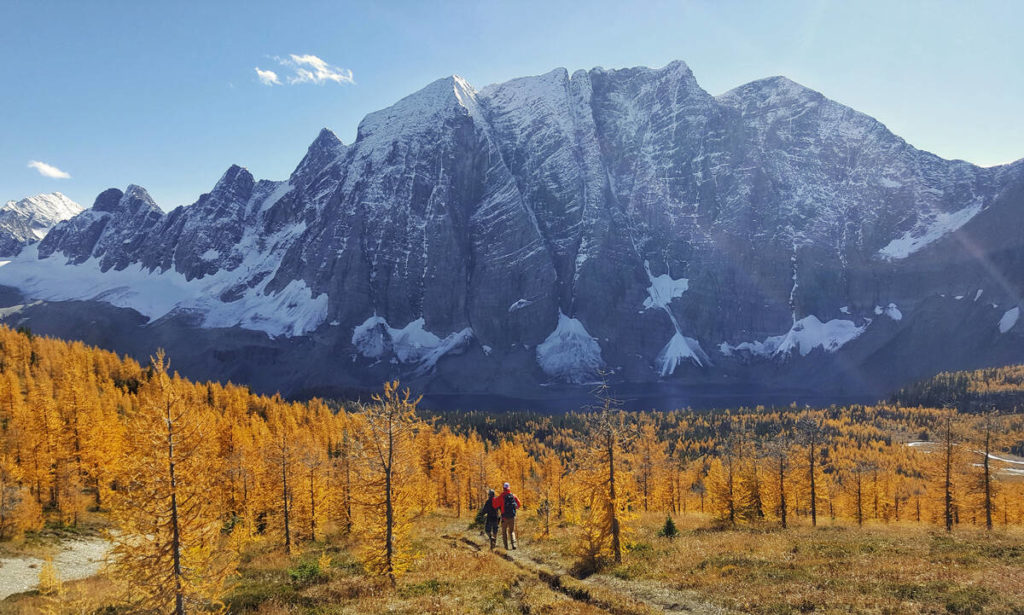
**NOTE: The elevated portions of the trail remain under snow until early to mid-July. Please note that Parks Canada commences booking for the Floe Lake campground only after July 10. Additionally, hiking might become challenging during late September/October due to autumnal snowfalls.
Secure your prime campsite today for July, August, and September! This essential reservation is required, along with a non-refundable reservation fee applicable to all bookings. Set your alarms! Reservations open on January 27, 2025, at 8:00 am MST/7:00am PST. Don’t miss out.
Your next step is to acquire a Backcountry Camping Pass. These contributions play a crucial role in the upkeep of the campgrounds, trails, and other backcountry amenities. It is advisable to make reservations in-advance rather than relying on same-day permits to ensure a seamless experience and avoid any potential disappointment.

